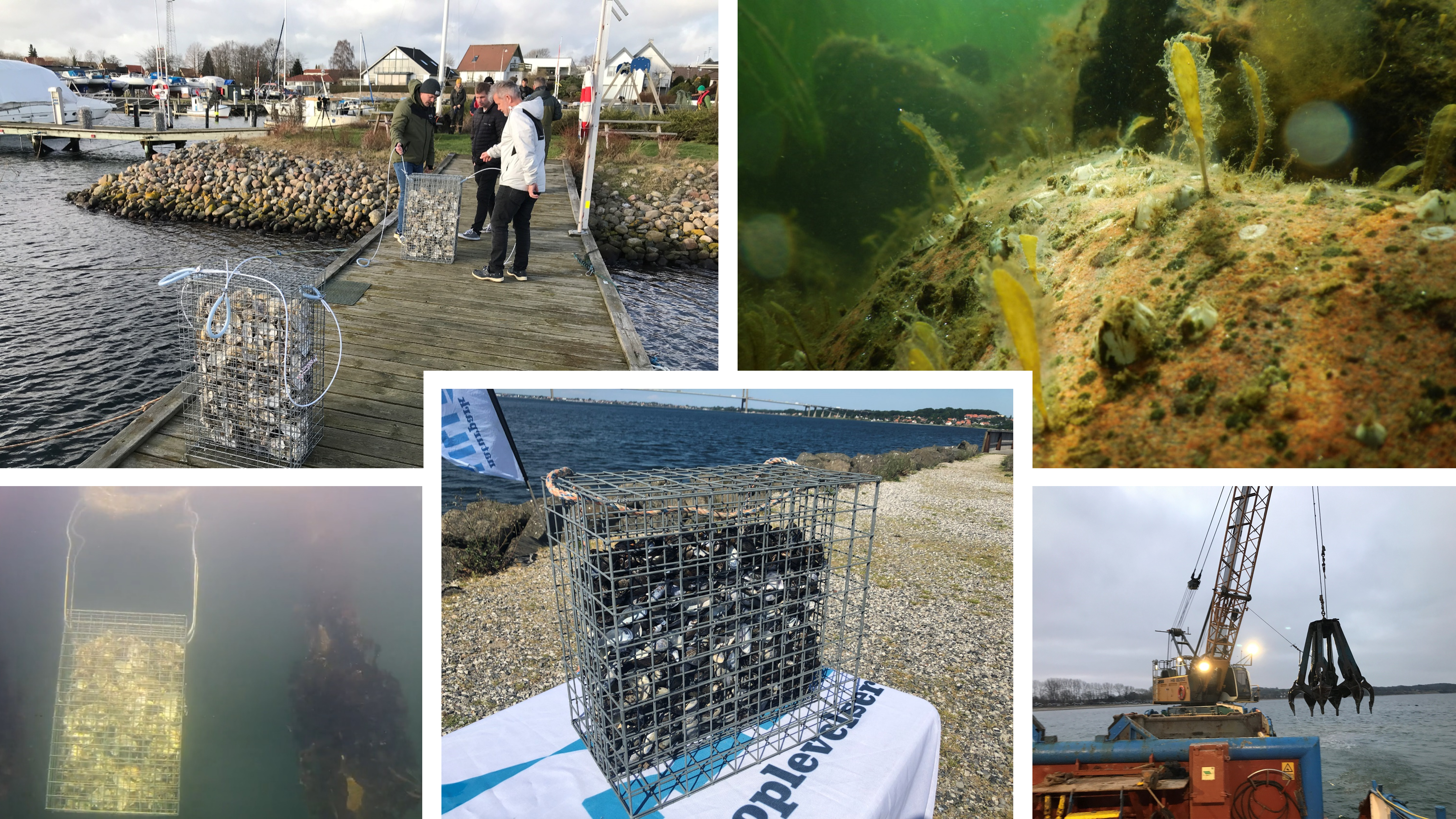Belt in Balance
The Bælt i Balance (Belt in Balance) project focuses on the marine environment and restauration
of Lillebælt. Nature Park Lillebælt carries out marine habitat restoration, scientific research, and public outreach
on marine and coastal ecosystems in collaboration with volunteers and partners.
From 2020 to 2026, initiatives include the establishment of stone reefs and fish nurseries, as well
as marine protection areas related to fisheries management and campaigns against underwater
noise.

-
Lillebælt is in poor ecological condition, which is reflected in eutrophication, declining fish populations, and the loss of vital habitats. As a result, there is a strong focus on conserving and improving the marine environment through targeted restoration efforts. The impact of these initiatives is monitored, particularly sea trout, cod, and harbor porpoises, by research institutions such as DTU Aqua and Aarhus University.
-
Lillebælt is home to one of the world’s densest populations of harbor porpoises, a localemblem of the area. Therefore, specific conservation efforts are also directed at this species.
-
The narrow and deep strait has shaped a unique geological and hydrological environment where visitors can experience a diverse landscape and rich biodiversity both above and below the water surface. Communicating knowledge about marine ecosystems and restoration efforts is a key focus in Nature Park Lillebælt’s work and is an integrated part of project ‘Bælt i Balance’. The effectiveness of these outreach efforts is assessed by the University of Southern Denmark.
- Stone reefs targeted at smolt/sea trout near Varbjerg
- Stone reefs with a focus on cod and harbor porpoise monitoring in Tybrind Vig
- 56 BioHuts® (artificial fish nurseries) distributed across 5 locations
- Removal of crabs
- Voluntary fishery closures
- Code of conduct for boating and underwater noise reduction
- Virtual Reality based educational games for school classes
- Snorkeling and diving trails
- Educational programs and field excursions for schools and youth education institutions
- Steering committee meetings
- Continuous updates on research findings
- Public debates and thematic meetings
The project covers the entire Nature Park Lillebælt area, which includes the coastal and marine territories of Fredericia, Kolding, and Middelfart municipalities, stretching from the outer Vejle Fjord in north to Brandsø in south.

The designated area of Nature Park Lillebælt

Nature Park Lillebælt works to enhance and communicate knowledge about marine and coastal ecosystems through various projects aimed at restoring marine habitats such as stone reefs, eelgrass meadows and biogenic reefs. Within the ’Bælt i Balance’ project, the following key initiatives are being implemented;
Marine restoration efforts and impact monitoring
Outreach activities to raise awareness about marine biodiversity and conservation efforts, including
Local engagement with citizens, businesses, and representatives from volunteer and industry associations, including


The project is carried out by the municipalities of Fredericia, Kolding, and Middelfart in collaboration with DTU Aqua, Aarhus University, and the University of Southern Denmark, along with a wide range of stakeholders, volunteer organizations, and business partners. The total project budget amounts to 35.3 million DKK, funded by Nordea-Fonden, VELUX FONDEN, Friluftsrådet, and the three municipalities.
The project will conclude in 2026 with ongoing reporting. Project results can be followed via the Nature Park Lillebælt website and social media.
https://naturparklillebaelt.dk/baelt-i-balance/
Contact information
Lars Seidelin – Lars.Seidelin@middelfart.dk
Tobias Berthel Bendixen – tobias.bendixen@fredericia.dk
References
Frausing, M. H., Kruse, B. M., Præstbo, N. O., Kristensen, M. L., Baktoft, H., Aarestrup, K., & Svendsen, J. C. (2021). The world's first smolt reef to support sea trout in Nature Park Lillebælt. DTU Aqua.
Kacperska, K. A., Svendsen, J. C., Kusk, P. H., & Præstbo, N. O. (2023). Nature Park Lillebælt: Improving the marine environment. Sound/Visual production (digital), DTU Aqua.
Kacperska, K. A. (2023). Improving Biodiversity: Are Marine Kindergartens Increasing Fish Abundance? Bachelor Thesis, DTU Aqua.
See article on BioHuts from Geografisk Orientering here;
https://naturparklillebaelt.dk/wp-content/uploads/2023/09/Biohut-artikel-Mads-Rabech-i-GO.pdf
